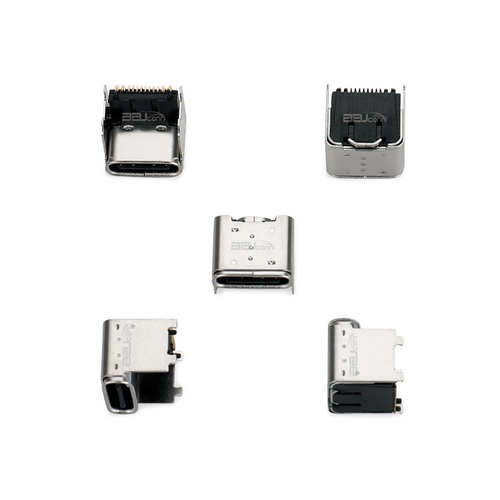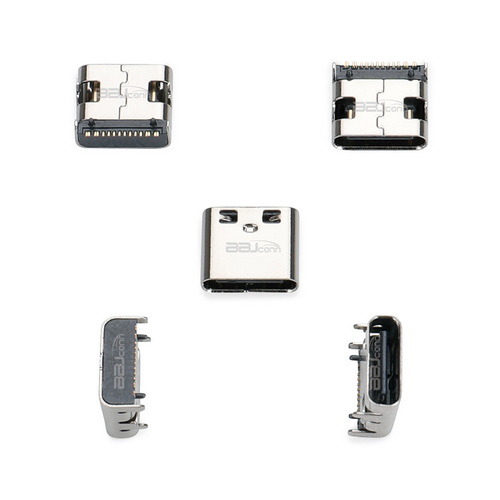In-depth Analysis of Type-C Connector Compatibility: Technical Misconceptions Under a Unified Interface Standard
发布时间:2025-10-26作者:Shenzhen BBJ technology co., LTD点击:23
In-depth Analysis of Type-C Connector Compatibility: Technical Misconceptions Under a Unified Interface Standard
The widespread adoption of Type-C connectors is considered a revolution in the field of electronic interfaces. From mobile phones and laptops to tablets, cars, and smart home devices, almost all mainstream electronics brands are transitioning to Type-C connectors. However, despite being called a "universal interface," users still encounter problems such as charging incompatibility, limited transmission speeds, and video output failures in actual use. These problems reflect the complexity of Type-C connector compatibility.
Type-C connectors are designed for versatility, supporting multiple communication protocols including USB 2.0, USB 3.2, Thunderbolt, and DisplayPort. However, this high level of integration also leads to inconsistencies in protocol support among different manufacturers. For example, even with the same Type-C interface, a mobile phone might only support PD fast charging, while a laptop might support PD 3.1 plus Thunderbolt 4. When these are connected, if the charging cable or adapter only conforms to the older standard, fast charging will be impossible or power will be limited. This compatibility difference—"uniform appearance, different core"—is currently the biggest pain point for users of Type-C connectors.
Type-C connector compatibility issues also manifest in chip identification and current negotiation. According to the USB-IF standard, the CC pin built into the Type-C connector is responsible for direction identification and power role negotiation. If the control chips (such as E-Markers) on the device and cable sides are incompatible, handshake failure may occur. For example, a user tried to charge an older laptop with a Type-C cable supporting 100W fast charging but found it only charged at a low speed of 15W. This wasn't a cable issue, but rather because the laptop's internal Type-C connector only supports the PD2.0 current standard. This case illustrates that compatibility problems are not structural defects, but rather system coordination barriers caused by inconsistent protocol support and chip logic.

Type-C connector compatibility is also limited by manufacturing processes and material standards. High-quality Type-C connectors typically use gold-plated pins, fully shielded shells, and highly flexible beryllium copper terminals to ensure signal integrity and low contact resistance. However, some low-cost products are prone to pin deformation or poor contact after thousands of insertions and removals, leading to signal attenuation and unstable connections. This physical layer compatibility issue is often mistaken by users as a "software protocol error," but it is actually caused by insufficient hardware precision and material control. For high-frequency signal transmission devices, the structural precision of the Type-C connector directly determines data integrity and power safety.
Type-C connector compatibility is also affected by different device ecosystems. While brands like Apple, Huawei, Xiaomi, and Lenovo all use Type-C interfaces, their compatibility strategies for fast charging protocols such as PD, QC, and SCP differ. For example, some Android devices support PPS dynamic voltage adjustment, while Apple devices only achieve optimal performance under the PD protocol. This means that even with the same plug shape, devices from different brands will still perform differently in charging and data transfer. Therefore, when purchasing Type-C accessories, users should not only look at the "interface shape" but also pay attention to the supported protocol versions, cable markings, and power ratings.
Type-C connector compatibility issues are unlikely to be completely resolved in the short term, but the industry is gradually moving towards standardization. The USB-IF organization has released the USB PD 3.1 and USB 4.0 standards, which provide stricter specifications for interface certification, chip identification, and current negotiation. Future Type-C connectors will possess enhanced intelligent recognition capabilities, automatically matching the optimal transmission mode and power level based on the device, thus achieving true "full compatibility." This is also the core direction of future electronic connectivity technology—achieving precise matching and adaptive performance within a universal form factor.

Type-C connector compatibility, seemingly a technical issue, is essentially a matter of industry collaboration. From protocol standards to material selection, from control chips to software logic, inconsistencies in any can affect the overall user experience. To truly resolve compatibility issues, the entire industry chain—including connector manufacturers, chip designers, and end-user brands—needs to adhere to unified standards, achieving deep integration from hardware to protocols. Only in this way can Type-C connectors truly become a representative of a "globally universal interface," rather than an awkward symbol of "uniform appearance but diverse functions."